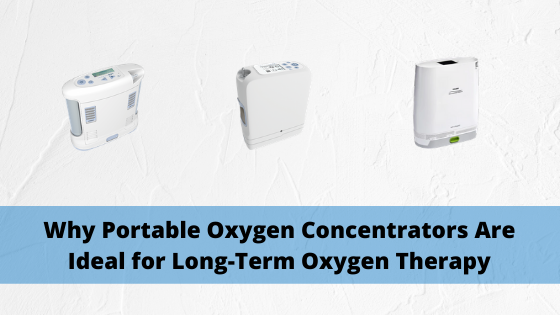
Oxygen therapy, also known as supplemental oxygen therapy, is the administration of medical-grade oxygen in order to treat a variety of medical conditions. While oxygen has been used as early as the 1800s, it wasn’t until the late 1900s that doctors were able to nail down the exact conditions that oxygen could treat, and equally as important, when oxygen therapy should be avoided.
Like we discussed in our last post, there are four commonly used types of oxygen delivery: hyperbaric chambers, oxygen tanks, liquid oxygen tanks, and oxygen concentrators. Hyperbaric chambers are a form of oxygen therapy that administers pressurized oxygen in order to treat conditions like decompression sickness and promote healthy blood flow. On the other hand, the other three oxygen delivery methods are usually used to treat chronic lung conditions like COPD, cystic fibrosis, and more.
In this post, we’re primarily going to be discussing portable oxygen concentrators and their benefits when it comes to long-term oxygen therapy. If you have any questions or concerns about what you read here, be sure to leave a comment or fill out the form at the side of the page so that one of our respiratory specialists can reach out to you.
What is Long-Term Oxygen Therapy?
Long-term oxygen therapy (LTOT) is the continuous use of oxygen therapy for patients with low blood oxygen levels (hypoxemia). Patients with early-stage lung disease may be required to use oxygen several hours a day, whereas people with more severe lung disease might need to be connected to their oxygen machine 24/7. According to the American Thoracic Society, the following conditions may indicate the need for LTOT in patients who suffer from chronic lung disease: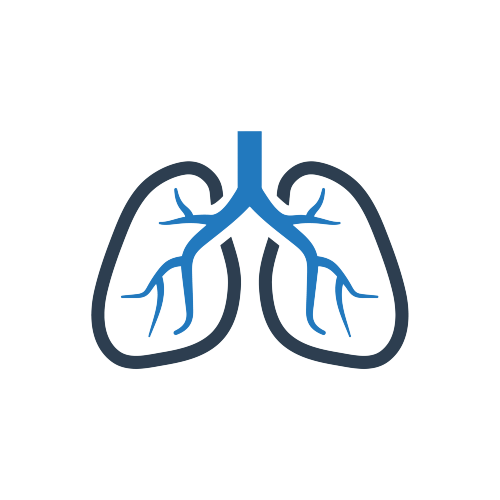
- A partial pressure of oxygen less than 55 mmHg (7.3kPa)
- An oxygen saturation of 88% or less
- Signs of tissue hypoxia (lack of oxygen in tissues)
- Pulmonary hypertension (high blood pressure in the lungs)
-
Pulmonary edema (excess fluid in the lungs)
Ultimately, oxygen therapy is one of the most effective ways to return blood oxygen levels back to normal in COPD patients. By doing so, they will maintain a much more stable pulmonary state avoiding common symptoms such as chest pain, breathlessness, and coughing fits. LTOT has also been shown to increase exercise capacity, reduce hospitalizations, and reduce exacerbation rate and severity.

When is LTOT Not Advised?
Contrary to popular belief, not all COPD patients require long-term supplemental oxygen. In fact, certain respiratory patients may experience something called oxygen-induced hypercapnia where a patient’s breathing is negatively affected by the use of supplemental oxygen.

Carbon Dioxide (CO2) is the byproduct of metabolism. Although it’s expelled from the body as a waste product, it does have one important function in the body: respiratory drive. Essentially, when there are higher levels of CO2 in your blood, it releases chemoreceptors to the brain which increases the rate of respiration. Since COPD patients have chronically high levels of CO2 in the blood, the body may become desensitized to these signals. In other words, supplemental oxygen may suppress respiratory drive and cause a COPD patient to retain more CO2.

While long-term oxygen therapy is effective for most COPD patients, it’s imperative that patients see their pulmonologist regularly. Supplemental oxygen is rarely a “black and white” situation, so it’s important to closely monitor things like CO2 levels, partial pressure of oxygen (PaO2), oxygen saturation, and COPD symptoms in order for oxygen to be prescribed effectively and safely. If problems arise, he/she may advise a decrease in oxygen flow rate or remove the patient entirely from supplemental oxygen.
{{cta('fa8abc2a-1e88-4fa3-82fd-1cb5b9ed43b2','justifycenter')}}
Why Are Portable Oxygen Concentrators Ideal for LTOT?
Now that you know the important role LTOT plays in treating COPD symptoms, you may be wondering why portable oxygen concentrators provide the greatest benefits for someone looking for an oxygen therapy device. While there are several other options like compressed oxygen, liquid oxygen, and stationary oxygen concentrators, portable oxygen concentrators have stood the test of time as the best option for long-term supplemental oxygen therapy.

Oxygen concentrators largely became popular around the 1970s when patients were looking for better alternatives to big, bulky oxygen tanks which needed to be refilled several times a day. Concentrators were revolutionary at this time because they prevented the need for oxygen patients to get up to go refill their oxygen. Simply by plugging the concentrator into the wall, they’d have an infinite supply of oxygen.

Portable oxygen concentrators didn’t become popular until the early 2000s when lithium-ion battery technology had advanced enough to make them practical. To this day, portable oxygen concentrators remain one of the most popular options for LTOT, especially for patients who are more active or want to limit the amount of work they want to put into their daily COPD treatment routine.
They Can Run 24 Hours a Day Without Interruption
Despite what your COPD treatment regimen says, you’re never truly going to be on oxygen 24/7 while using compressed oxygen or liquid oxygen. Running continuously at 2 liters per minute, an E cylinder will only last about 5 hours. D cylinders which are even smaller only last about 3 hours at the same LPM. What this means is that you will need to have a backup tank on hand or deal with a gap in your oxygen treatment while your tank fills up. Not only is there a chance you could experience an exacerbation during this time, but it will waste a lot of your time.
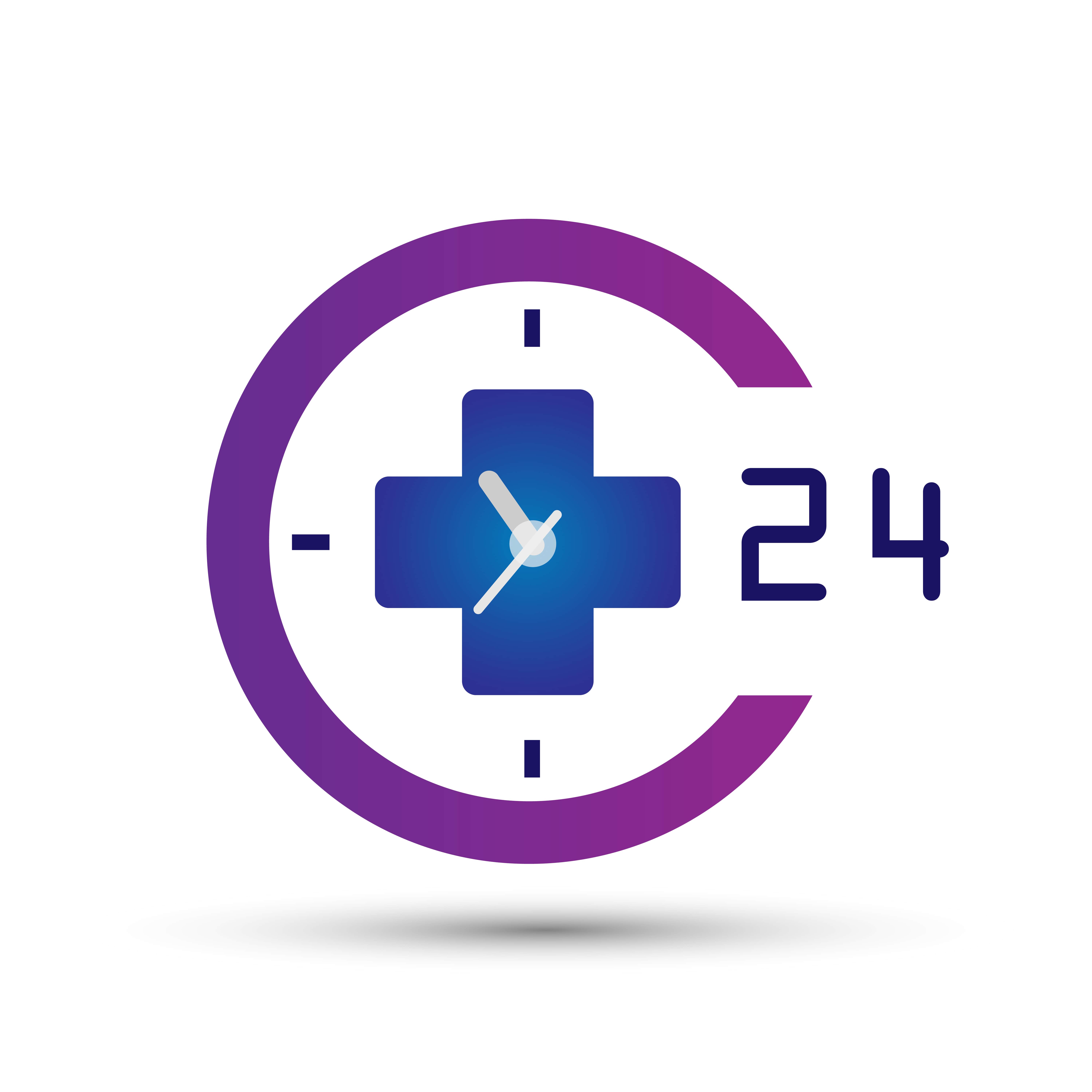
Fortunately, when you own a portable oxygen concentrator, you won’t have to deal with any of these issues. Every component of modern POCs is designed to be run 24/7 including the compressor, battery, and processor. As long as you take care to follow the instructions in your user manual, you will ensure that your device doesn’t overheat or malfunction. The most important maintenance procedure for most POCs is to change the particle filter. This component will prevent airborne contaminants like dust and dirt from getting inside your device and potentially damaging it. This also helps to ensure that the air you breathe through the nasal cannula is clean and doesn’t trigger a COPD exacerbation.

Another reason you can run your POC without interruption is because they run entirely off batteries so you’ll never have to refill it or keep an extra one on hand. Once your battery starts getting low, simply plug your oxygen machine into the wall and you can continue using it while the battery charges. If you want to stay out of the house for longer, you can simply carry an extra battery and swap it out with the other one once it starts to get low.
.png)
Lastly, several newer portable oxygen concentrators like the Inogen One G5 come equipped with something called an “Intelligent Delivery System.” In the G5, proprietary conserver technology ensures oxygen is always delivered within 400 milliseconds of inspiration. This is known as the critical point because it’s the time-frame when you experience the most clinical benefit from inspired oxygen. When you’re sleeping, breathing rates typically slow down significantly. The G5 responds to this by increasing the bolus size and ensuring that you always receive oxygen no matter your rate of breath. What’s more, the G5 can even detect shallow mouth breaths, adjusting oxygen delivery accordingly.
They Afford More Freedom and Independence for Patients
Freedom is a quality that defines everyone. Without freedom and independence, we wouldn’t be able to go where we please, pursue our dreams, or spend time with people that we choose. Unfortunately, many older adults and elderly people suffer debilitating conditions that prevent them from getting out and enjoying their lives — COPD is just one example of these.
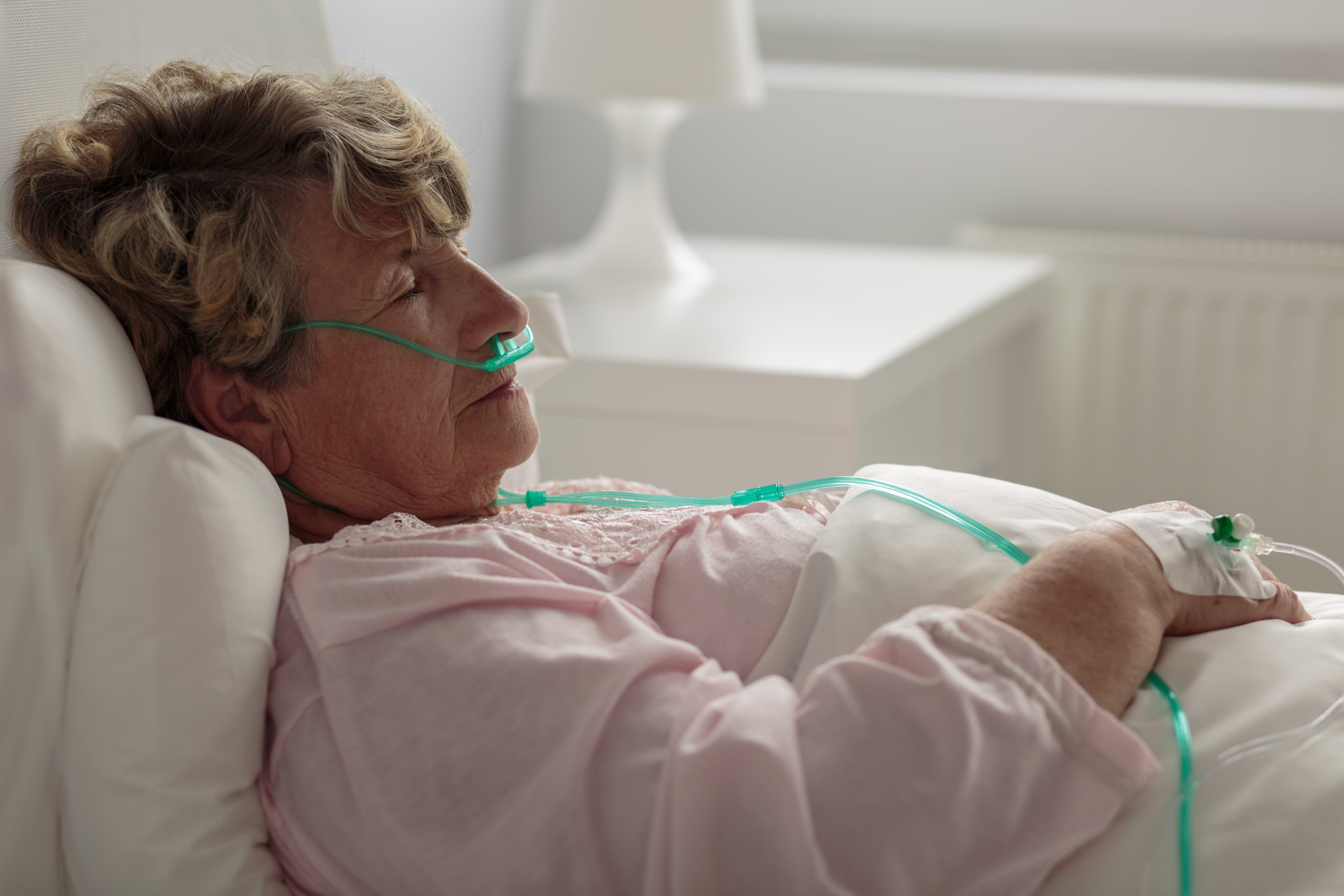
Many COPD patients report feeling chest pain or breathlessness just from simply waking up in the morning and getting out of bed. If you’re faced with all of this along with chronic fatigue and the thought of lugging around a heavy oxygen tank, it’s no wonder many COPD patients don’t get out of the house! The good news is that there is a better solution for long-term oxygen therapy that won’t add any burden to your already challenging daily routine.
Portable oxygen concentrators, especially pulse flow ones, are extremely light when compared to other oxygen therapy devices. An average continuous flow portable oxygen concentrator weighs around 10 to 15 pounds while the average pulse flow portable oxygen concentrator weighs around 6 pounds. Pulse flow units are so much lighter because of the technology that’s built into them allowing them to administer oxygen more efficiently. POCs are also more practical in terms of their shape. Whereas oxygen tanks are oblong, POCs are usually box-shaped or rectangular making them much easier to store in small places.

Most continuous flow POCs should be carried with a rolling cart, however, pulse flow POCs are light enough to carry over your shoulder. Amazingly, the lightest portable oxygen concentrator, the AirSep Focus weighs in at just 1.75 pounds which is light enough to clip onto your belt! Other pulse flow POCs like the Inogen One G4 are small enough to fit in a purse or small handbag. However, it’s recommended that you use the official carrying bag that comes with the device to avoid damaging it.
{{cta('b59df0c1-c4de-47a8-8e1c-0d33d4b414aa','justifycenter')}}
They Allow Precise Control Over Oxygen Output
As aforementioned, one of the most important things about long-term oxygen therapy is the ability to have precise control over your oxygen delivery. If you aren’t receiving enough oxygen, you may be at a high risk of experiencing a COPD exacerbation or other symptoms like breathlessness, chest pain, or coughing fits. If you’re receiving too much oxygen, you may experience oxygen toxicity or oxygen-induced hypercapnia.
One of the defining features of portable oxygen concentrators is that they allow for precise control over your oxygen delivery. Each POC has what’s called flow settings. Each one has a different number of flow settings and a different oxygen output for each one. So, for example, the Inogen One G5 has 6 flow settings and a total oxygen output of 1,260 ml/min of oxygen. This means that for each flow setting you go up, you’ll be increasing your oxygen by 210 ml/min. You can adjust your flow setting on the fly by pressing the arrow buttons on the device’s control panel.
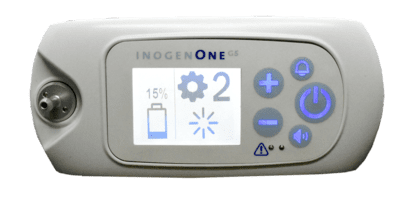
One of the greatest benefits of being able to change your oxygen flow so easily is that you can ensure that you always get the oxygen you need no matter what you’re doing. Some patients like to use their oxygen concentrator while they’re exercising meaning they’ll likely need to increase their flow rate to accommodate for this. On the other hand, you may be sitting down for a long period of time and want to reduce your flow rate in order to save battery life — you can do this too!
They’re More Affordable Than the Alternatives
Oxygen patients are often surprised when they hear someone say that portable oxygen concentrators are the most affordable method of oxygen delivery. One of the reasons for this is because insurance companies often label them as expensive “luxury” items that are not necessary for a COPD patient’s happiness and well-being. While oxygen concentrators do have a higher upfront cost than most other forms of oxygen therapy, they are much more cost-effective when it comes to long-term oxygen therapy.

Oxygen tanks have very low upfront costs and this is what makes them so appealing to people. A home or portable oxygen cylinder can be bought for a couple hundred dollars. But the problem is that the longer you use it, the more you have to spend on it. If you want to refill your own tank at home, you’re going to need to purchase a homefill oxygen refill system. These machines alone cost as much as a portable oxygen concentrator. If you decide to go the other route and have a professional refill your tanks, you can expect to pay upwards of $10 for each fill. This can add up very quickly if you use oxygen every day.
Alternatively, you can purchase a portable oxygen concentrator. Although they run several thousand dollars upfront, there are little-to-no maintenance costs. Portable oxygen concentrators are designed to be run 24/7, all you’ll need to do is clean and replace the particle filters regularly to ensure that it runs smoothly. Additionally, most portable oxygen concentrators come with a 3-year warranty at the very least. So, if anything goes wrong with your device within that time frame, you can get it repaired at no cost to you.
They Promote a Productive Lifestyle
Productivity is not something that should be restricted by your age or health. Unfortunately, many people with COPD and other debilitating diseases become less motivated to lead a productive lifestyle when they’re dependent on friends and loved ones for support. Oxygen tanks add to this because they keep oxygen patients homebound and in some cases, they even prevent them from moving around the house freely.

On the other hand, portable oxygen concentrators offer more freedom than any other type of oxygen therapy device. With the average pulse flow POC weighing under 6 pounds, you won’t have to dread the thought of walking up a flight of stairs or going into a crowded public area. Ultimately, it will allow you to focus on what you’re trying to accomplish rather than on whether or not your oxygen needs are being met.

Another reason many people don’t like using oxygen tanks is that they can make you feel self-conscious. It’s easy to feel like you’re a burden on other people when you’re wheeling around a bulky and dangerous oxygen tank behind you into public areas. Portable oxygen concentrators don’t have this effect because they’re small enough to fit under your shoulder. They’re also pretty inconspicuous so most people won’t even notice it. And if they do, they likely won’t ask any questions or give you any unwanted attention.
They’re Much Safer to Use
If you remember the last time you went out and bought a car, what was the first feature you looked at? Chances are, it wasn’t the gas mileage, top speed, or color — it was safety. If you’re going to be investing your money in something, it would be unwise to check whether it’s going to be safe or not. And just like with a car, your portable oxygen concentrator is a long-term investment, so there’s a lot at stake.
One of the main reasons oxygen tanks are so dangerous is because they contain many liters of compressed oxygen inside them. Oxygen is not flammable or combustible but it is an oxidizer. What this means is that when something is exposed to oxygen it can catch fire more easily. Additionally, oxygen is stored at very high pressures meaning there’s always the risk that it could explode. Liquid oxygen is stored at much lower pressures, so they’re safer in that regard, but you’ll still be carrying around a canister of medical-grade oxygen.

The main reason that portable oxygen concentrators are so much safer is that they contain no compressed oxygen. Ambient air is drawn into the concentrator and gases like nitrogen, argon, and carbon dioxide are removed. A pulse flow POC will only put out oxygen when you inhale, so if you happen to put down your nasal cannula, oxygen won’t continue to come out of the hose. Instead, it will stop producing oxygen and wait for you to start inhaling again. It’s also much safer that oxygen comes out in boluses rather than continuously.
You’ll be happy to know that the people around you will also feel more secure and safe while they’re around you. Many people are misinformed about the dangers of oxygen, believing that it can catch fire rather than acting as an oxidizer. While you can take the time to explain exactly how it works, it’s best to just use a device like a portable oxygen concentrator that won’t get people on edge.
{{cta('43b79c5e-6bd6-4f02-ac27-2d038d20c146','justifycenter')}}
Conclusion
Long-term oxygen therapy is a core component of most COPD treatment plans. While some patients won’t need any supplemental oxygen, most will need to use it for 18 to 24 hours a day. Portable oxygen concentrators tend to be the best option for people who need LTOT because they’re safer, more cost-effective, lighter, smaller, and easier to use than most other medical oxygen devices. However, before making any decisions about your oxygen usage, be sure to consult your pulmonologist who will be able to make recommendations based on your health condition.

